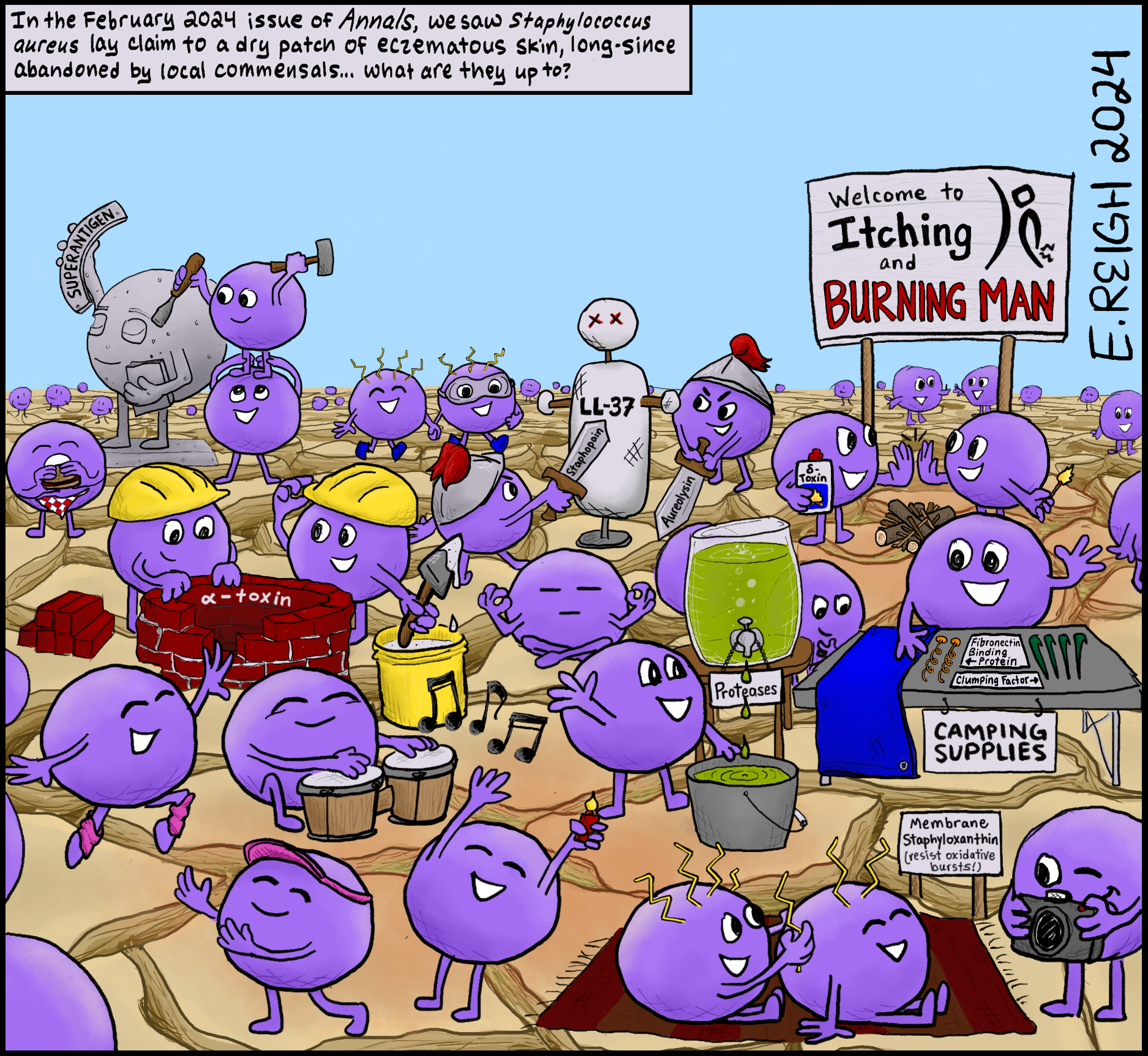JUST THE BASICS
Atopic dermatitis (AD), also known as eczema, is a rash that is common in children with allergies. With AD, the skin becomes inflamed, cracked, red, itchy, and flaky. This damaged skin is more likely to be covered in “bad bacteria” like Staphylococcus aureus. “Staph” bacteria can make inflammation worse by releasing toxins that break down the skin’s natural barriers.
TELL ME SOMETHING NERDY
S. aureus releases a wide range of toxins and proteases that can worsen inflammation in atopic dermatitis. Alpha-toxin, for example, forms a pore on the surface of epithelial cells to destroy them, allowing S. aureus to invade deeper into the skin. Delta-toxin is another toxin made by S. aureus. It can trigger the release of histamine from mast cells, causing allergic inflammation. S. aureus can break down our skin’s antimicrobial peptides, like LL-37, with enzymes such as staphopain. Finally, S. aureus can also produce superantigens that activate T cells. While activating the immune system is usually beneficial, superantigens are like an “on” switch for T cells with no “off” switch. When T cells are unable to turn off, the resulting inflammation is harmful and causes tissue damage.
Cartoon published in the June 2024 Annals of Allergy, Asthma & Immunology: https://doi.org/10.1016/j.anai.2024.01.007
